Most Fishermen do not pay much attention to the importance of the knots.
Although it is said that they are the weakest link between fishing and catch. We do not have to be experts in binding a hook, or baits, and we do not need to know a large number of knots.
However, it is important that we know how to tie up a couple of knots that are the easiest for us, and they are also safe.
Here are some examples of fishing knots; you choose the ones that suit you most.
“Half-Blood” knot

The experience of users of this knot tells us that this node has a flaw that manifests itself by sliding the knot by reducing the size of the loophole until its complete loss, followed by pulling out the end of the strings and unbinding the knot.
My recommendation is to double the loop through the loop twice.
One of the common places is the binding of this knot at the end of the string to prevent the end of the string from being drawn.
Blood Bight Knot

The next knot that you can do quickly and easily is “Blood Bight.”
- Duplicate the strings in order to make the loop of the desired size.
- Wrap the double end of the double strings twice.
- Now, move the end of the loop through the first loop formed in the previous step.
- Form the final shape by pulling the string with the same force on both sides.
The Blood Bight knot is often used when fishing in deeper water when you use more hooks.
Some fishermen put hooks directly at the end of the loop, and hooks should be at least 30cm from the end of the strings.
This is not exactly the best solution, especially when the fish are cautious.
A much better way to tie one side of nylon to a short Blood Bight node is to use another Blood Bight knot or Surgeon’s knot.
Clinch Knot

- Pull strings through the hooks.
- Pull out and duplicate, make five turns around the strings.
- Sweep the end of the strings through the first loop, right up to the ring, and then through the big loop.
- Drag until a knot is formed.
- Slide the reel into the ring.
Jansik Special
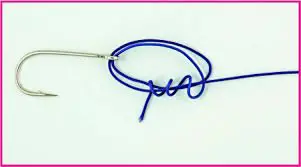
Another great and simple knot that you can do, “Jansik Special” is a very strong knot and it is made in the following way:
- Drag 15 cm of strings through a ring of the hook.
- Swing again and make the round and then once again.
- Once you have made the second round, you can also take the third time.
- Follow the circuits of the strings and make the third circle of the strings.
- Put the hook in a bracket or pinch it on something, and wrap the strings at the end of the strings.
- Drag both ends of the strings until the knot is formed.
Palomar Knot

“Palomar” is another very simple node for end-products. He was rated by the “International Game Fish Association” as a strong knot. He is very good, safe, and very practical.
- Duplicate a 15-string strand, and swing it through the ring hook.
- Let the hook hang on the double-strand and make a simple loop. Do not tighten the loop.
- Pull the end of the loop down and slide it over the entire hook.
- Drag both ends of the strings and make a knot.
Hangman’s Knot
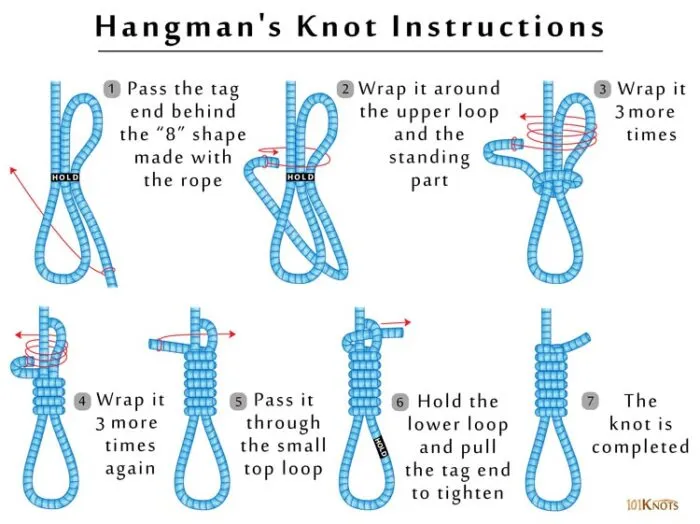
There are at least six variants of “Hangman’s” knots, all of which are excellent for finishing hooks, turnstiles, and so on.
The standard “Hangman’s” node is reliable if there are five reels when it comes to monofilament nylon.
If it is a threaded string, and you want to use it, make eight reels.
- · Drag 15cm strings through the ring.
- Bring the end of the string along the main strings, then return half back under both of the strings.
- Make five reels around the double strings.
- Form a knot.
- Lower the knot to the end of the ring toward the hook or carousel.
Scaffold Knot
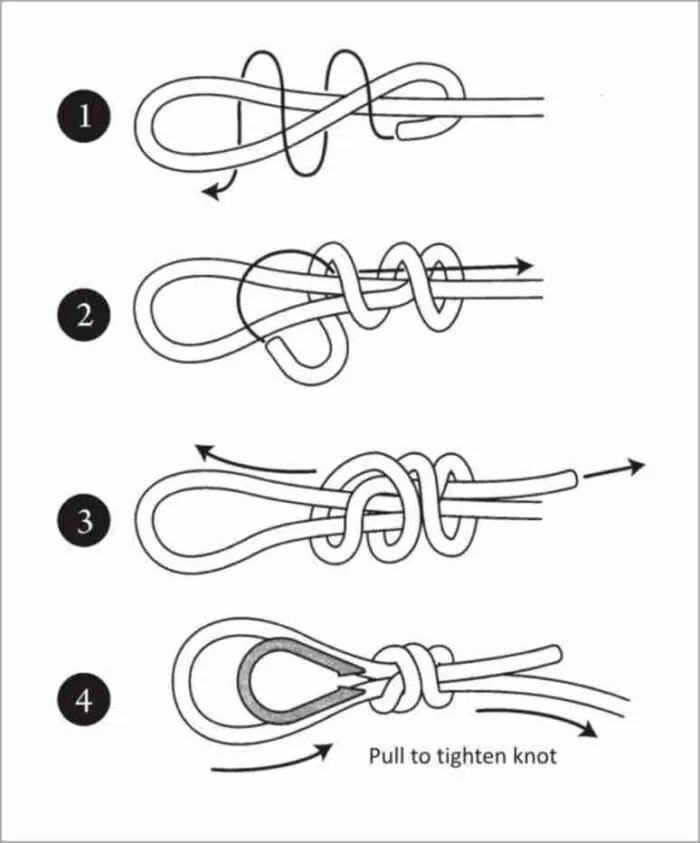
This is a much simpler version. This knot never disappoints, whether kilogram-weighted or 50 kilograms, is attached to it. This knot is from Ern Grant’s knot binding tutorial.
- Drag 15cm strings through the hook head.
- Hold the upper part of the loop between the thumb and forefinger, making the loop.
- Holding a strand with your thumb and forefinger, wrap another two folded strings.
- Swing the end of the strings through the two reels you just made, and through the reel that you made in step 2.
- The formed knot can now receive its shape, pulling the end from the hook.
Blood Knot

- Put the two ends of the strings, one against the other, so that they overlap in the length of about 15cm.
- Make five reels around one strand at the end of the second strand, and drag that end back and drag it between the two strings at the beginning of the reel.
- Repeat the same reel at the end of the second strand and put that end back, dragging it between two strings through the same place as the previous end, but on the other. These two ends should go in two opposite directions.
- Grow strings contrary to one another; make sure the ends do not get out.
- Firmly tighten the knot.
Uni Knot

Better connectivity can be made using one of the “Hangman” knots, which in the “International Game Fish Association” is called the “Uni” knot.
- Switch the two ends of the strings to a length of about 15cm.
- Using one end, wrap both strings.
- Wrap the end six times around two strings.
- Drag the end to tighten and make a knot.
- Repeat the procedure using the other end of the strings.
- Drag both strings until the knots are assembled.
Surgeon’s Knot

It has been mentioned earlier that if two strings of very different diameters are tied together, then the strand should be submerged when connecting the knots, or use the “Surgeon” knot.
A possible cause is that it will probably be necessary, if one string is wrapped on a hollow, to continue using this knot.
- Switch two strings one over the other in a length of about 22 cm.
- Working with two strings as with one, tie the loop (“Overhand” knot). It will be necessary to drag one strand (foreground) completely through this loop.
- Pull the lead through the loop again.
- Push the other end through the loop.
- The formed knot can now be tightened.
Offshore Swivel Knot
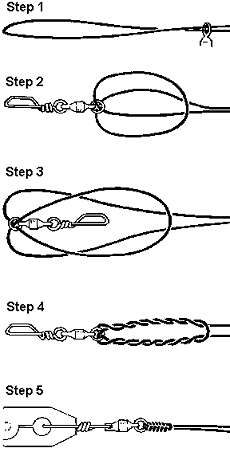
- Sweep the end of the double strings through the carousel.
- Rotate the end for half a circle, making one of the ends between the end and the rings on the spinner.
- Transfer the knot over the spinner. Hold the edge of the loop, along with the sub-strung strings, in one hand, and let the spinner slide to the end of the double knot formed.
Continue keeping the cord and strings with your right hand. Rotate the spinner through both sides six or more times with your left hand.
Keep pressing on both sides of the double strings. Leave the loop. Drag the spinner, and the knot on the spindle will be formed.
Hang up the spinner, or tightly with your hand, grasp the strung with another hand closer to the nose and pull the double-strand to the opposite side of the spinner.
Surgeons End Loop
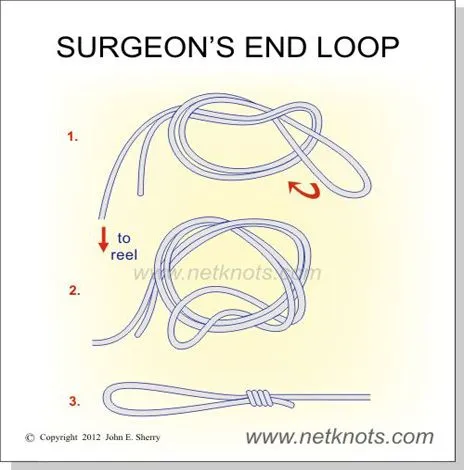
The pins are used to connect the front, which is attached to the final fitting. And their advantage is that they can bind quickly and in the dark.
“Surgeon End Loop” is easy to make.
- Grab the end of the strings and duplicate it to form a loop of the desired size.
- Tie the “Overhand” knot to the desired place, but do not clamp it.
- Pull strings through this loop.
- Hold the strings and ends together, and drag the loop to form a knot.
Summary
Before tightening it is mandatory to moisten the knot (immersion in water)
Most knots we must tight slowly and evenly to the end (“blood knot” is an exception, it is tightened with a quick move, emphasizing that the monofilament must be larger than the diameter).
Cut the ends of the knots with the knife (even with teeth), but do not burn them with a flame or a cigarette!
Check the knot by pulling it several times before use.
Bind knots at home before going fishing.
With the naked eye, we cannot see the damage on the knots; it is frequent, and sooner or later lead to breaking the strings, i.e., to the loss of bait or a fish.
The overturned knot easily snaps on an overloaded part.
This awkward situation can be avoided if knots are carefully linked and if we change them regularly.
